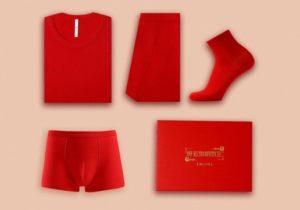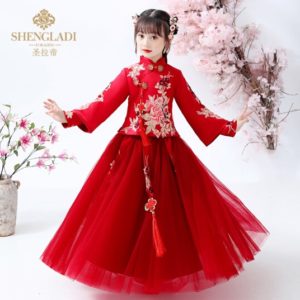Feb 3, 2021|
In-Depth Report: Chinese New Year Consumption: For Family, Oneself, or Gifting
by Ella Kidron and Vivian Yang
Feb 12 is Chinese New Year’s Day. It is time for family reunion, people shop for a fresh start and for good omens. It’s more of a gifting holiday, and less about shopping for oneself.
Over the last decade or so, China’s massive shopping festivals, including Singles Day (Nov. 11) and JD’s 618 Grand Promotion (Jun. 1-18) have gradually become known around the world. What is less known, however, is the importance to retailers of Chinese New Year a.k.a. Spring Festival. Where China’s e-commerce holidays are about ushering the newest of the new in terms of gamification, products and more, CNY is celebrated by observing traditional cultural norms and customs.
All said and done, CNY is a golden time for shopping even in face of COVID-19. On the surface, people have elected to make major changes to their holiday plans to minimize infection risks, reducing travel, social gatherings and large-scale entertainment activities. Yet, as indicated by JD’s data* their emerging consumption behaviors and preferences in the new reality have underlined their unchanged desire to preserve the unique nature of the festival – a way to maintain a sense of belonging and security in the fast changing world.
These trends can be broken down into eat, wear and use.
Eat
Consumers have increasingly turned online for their food-related shopping, especially under COVID-19. Traditional CNY dishes are no exception. According to JD’s data, sales of Buddha-Jumps-over-the-Wall (佛跳墙), a nutritious soup or stew which includes more than 20 ingredients such as quail eggs, bamboo shoots, scallops, sea cucumber and more, increased 320% YOY. Other staples of the CNY dinner table, including pastries and alcohol, increased 51.4% and 67% respectively. With heightened health consciousness among Chinese consumers, nourishing products increased over 93% YOY.

Instant package of Buddha-Jumps-over-the-Wall on JD.com
Consumption of baijiu in China’s lower-tier cities makes a higher proportion of overall alcohol consumption than in the first and second tier cities where imported liquor and wine are becoming increasingly popular. Looking across all age groups, baijiu accounts for more than 70% of overall alcohol purchases ahead of CNY. Imported liquor is most popular among Gen Z consumers (aged below 25), making up 10% of pre-CNY liquor consumption. Across all ages and city tiers, beer makes up roughly or just under 5% of consumption. Age 56 and up consumers represent the highest proportion of wine consumption, reflecting increased attention towards health, which also shows people of this age group have more disposable income on alcohol spending.
Wear
Red is a lucky color in Chinese culture and red clothing is a distinguished feature of the Spring Festival. As 2021 is the Year of Ox, ox-printed facemasks, t-shirts and shoes, are in high demand during the New Year sales. Of course, red underwear, believed to secure luck, cannot be forsaken. This is particularly true for people born in the year of the ox, as it is widely believed in China that when the zodiac coincides with people’s own year of birth, they will have good chances to encounter misadventure, and the most popular way to equip oneself and avoid the bad luck is with red accessories such as underwear, bras, socks and belts.

Red underwear gift box on JD.com
JD’s data shows that since the beginning of the New Year sales, search volume of red underwear on JD.com already increased 750%. A marketing manager at JD Retail noted that since people are spending more time at home, red color pajamas and home wear have attracted more customers’ attention. High quality pajamas, like 100% silk ones became popular gift choices.

Silk pajamas in red gained popularity during the New Year Grand Promotion on JD.com
Wearing Hanfu, a kind of traditional Chinese clothing from the 17th century is a popular fashion trend in recent years. Sales of Hanfu have witnessed strong growth during the New Year Grand Promotion. JD’s data shows that Hanfu sales increased 67% YoY during this period. Among the buyers, 76% are young people under 25, 80% are female and 30% female buyers also bought Hanfu for children.

Red Hanfu for children on JD.com
Use
Last year, around this time, consumers all over China were scouring stores and e-commerce platforms for masks – most of which were the light blue surgical masks or other drug store masks originally used to combat air smug. The blue masks are now ubiquitous, and in many instances have been replaced by their fashion forward cousins as mask wearing has become an inseparable part of daily wardrobes. In fact, JD recently launched a line of custom masks, in red to match the red outfits customarily worn for Chinese New Year (CNY).

Custom New Year Facemask on JD.com
From a category perspective, while sales of medical and health products have increased 65% and jewelry sales has increased 40%. At the same time, sales of personal care, maternal and child and beauty product purchases have increased 59%, 54% and 44% respectively, indicating that in addition to gifting things like health products and jewelry, other categories for self and family care are also gaining popularity.
One of the biggest differences compared to previous years will be diminished travel during the CNY period. Looking at JD data gives a bit of insight into how consumers separated from their family by distance might change their spending pattern. Computer and office supplies and education supplies increased 65% and 64% YOY respectively. It’s also possible consumers might look to get caught up on their reading as books were also in the top 10 categories in terms of increase ahead of CNY.
A Chinese New Year celebration would be remiss without decorations. Posting spring couplets on walls and paper-cut art on windows are two CNY must-haves according to Chinese traditon.
As an auspicious symbol, the spring couplets are composed of a pair of propitious verses vertically pasted on both sides of the front door and a four-character horizontal scroll affixed on top of the doorframe, with black characters written on red paper. These couplets have since evolved, moving from doorframes to computer screens, cell phones, closets, pet homes and more, as can be found on JD.

Handmade paper-cuts have gained prosperity through the internet. Zhang Junjie, a paper-cut craftsman who used to sell his arts offline with an income of RMB 3,000 yuan per month, opened his online store on JD.com which turned out to be a big success. Nowadays, Zhang’s online business can generate more than RMB 200,000-yuan monthly.

Moreover, based on customers’ feedback online, Zhang started to develop new products to meet his fans’ needs, such as paper-cut bookmarks, Chinese shadow puppetry models and more.
Logistics
With the lack of travel, it is no surprise that “remote” orders, or orders where the sender and recipient city differ, have skyrocketed, especially in the largest cities in China such as Beijing, which is the top city in terms of receipt of remote orders.
Across all regions, remote orders for items such as rice, flour and cooking oil increased by 30-50% YOY. This may be attributed to a desire to ensure loved ones are well fed and safe during a time when many families are separated. The contents of remote orders tend to demonstrate a nostalgia for the specialty snacks and treats of people’s places of origin. For the month of January, remote orders sent from Beijing had increased 55% YOY. Shanghai, Guangzhou and Shenzhen had seen remote orders increase 45%, 45% and35% respectively.
For the ninth consecutive year, JD Logistics has committed to delivering throughout the Chinese New Year holiday period ensuring consumers can celebrate safely no matter where they are. As Chinese people continue to shop for happiness during the most important festival in the year, the role of retailers remains to provide better choices and trusted services to meet their needs.
*”JD’s data” refers to data is from Jan. 1-25, YOY increase refers to the lunar calendar
(ella@jd.com, vivian.yang@jd.com)





 This Harbin tourism boom has also spurred a surge in sales of winter apparel. JD.com’s data indicates a rapid growth in the sales of warm clothing items such as down jackets, snow boots, and thermal underwear between January 1st and 7th. The sales growth is especially pronounced in southern provinces and cities such as Jiangsu, Zhejiang, Guangdong, Sichuan, and Shanghai. Notably, tall snow boots registered a 206% year-on-year increase in transactions, while padded cotton caps and thickened long down jackets soared by 158% and 134%, respectively. Beyond clothing, travel gear has also seen a considerable uptick, with a 98% year-on-year growth in transactions for large suitcases and travel backpacks in these southern regions.
This Harbin tourism boom has also spurred a surge in sales of winter apparel. JD.com’s data indicates a rapid growth in the sales of warm clothing items such as down jackets, snow boots, and thermal underwear between January 1st and 7th. The sales growth is especially pronounced in southern provinces and cities such as Jiangsu, Zhejiang, Guangdong, Sichuan, and Shanghai. Notably, tall snow boots registered a 206% year-on-year increase in transactions, while padded cotton caps and thickened long down jackets soared by 158% and 134%, respectively. Beyond clothing, travel gear has also seen a considerable uptick, with a 98% year-on-year growth in transactions for large suitcases and travel backpacks in these southern regions. JD’s Commitment to 100% Authentic Products
JD’s Commitment to 100% Authentic Products 



